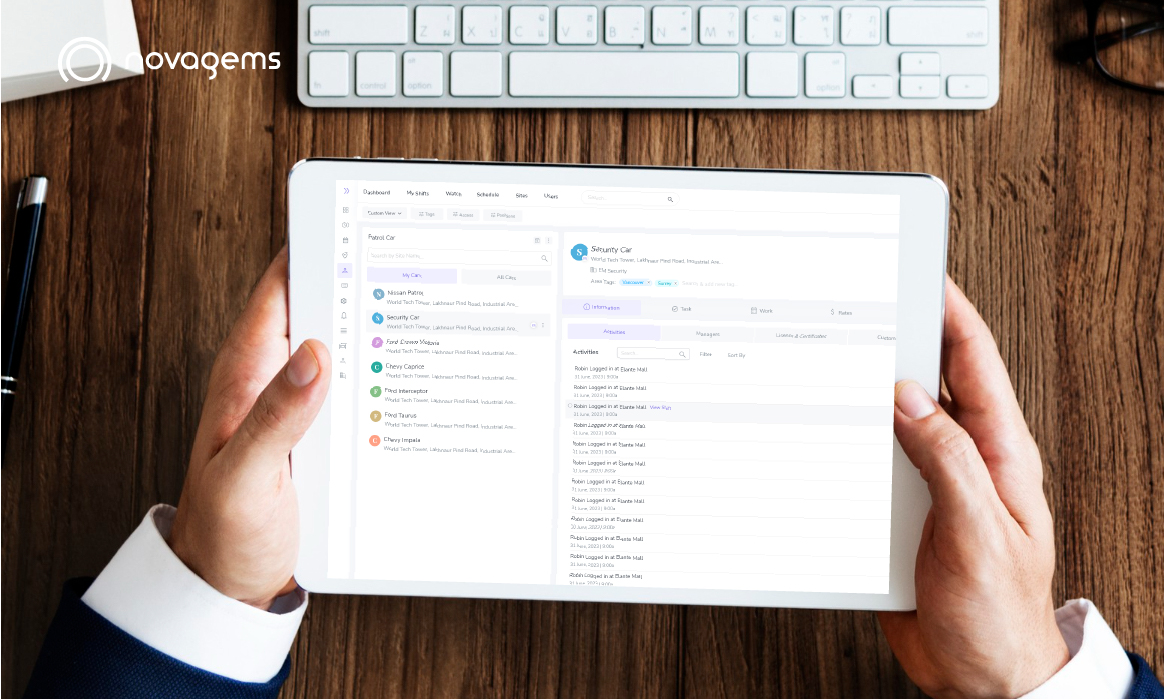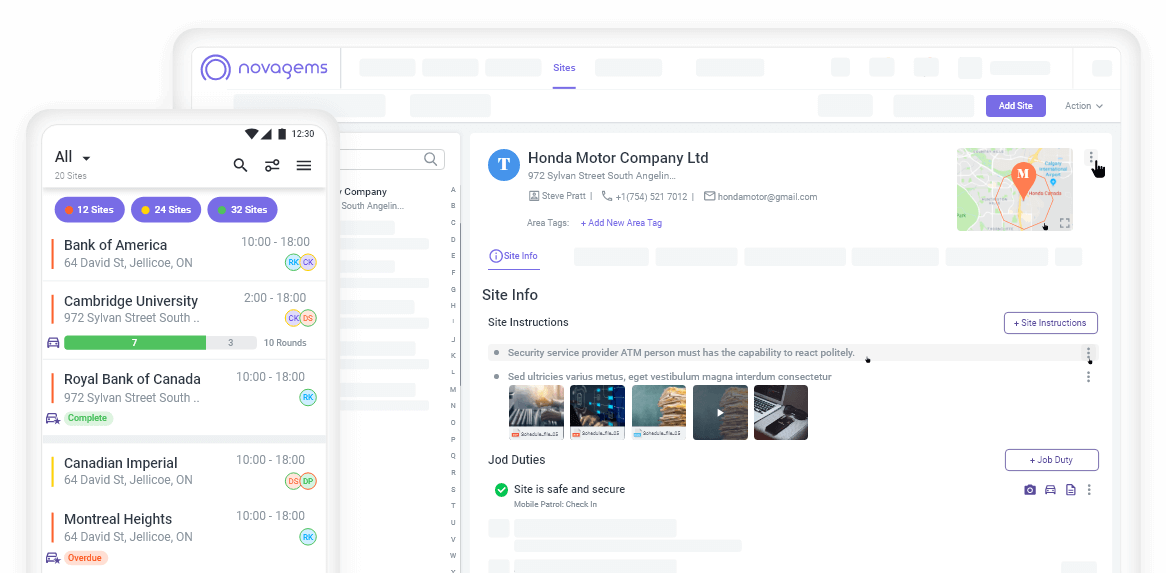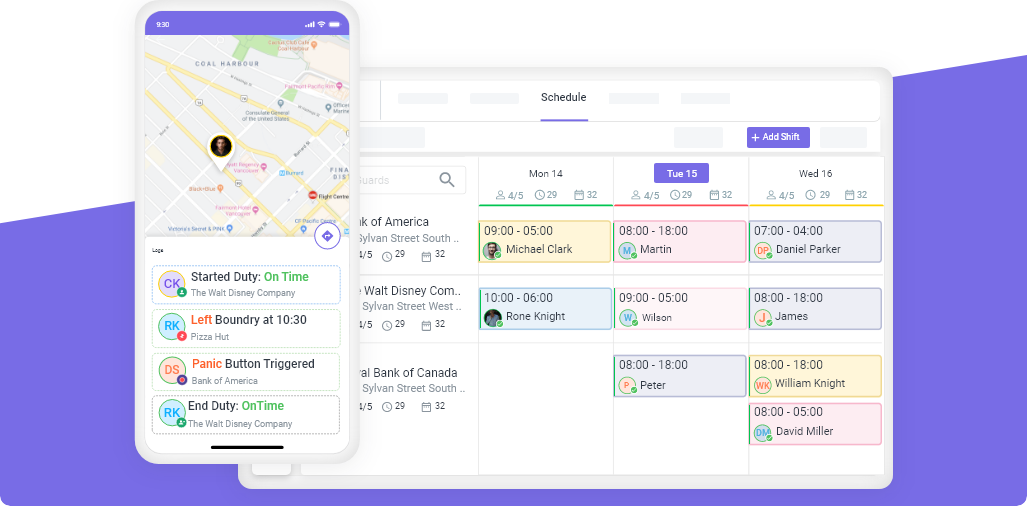The Role of a Patrol Management Software for Security Companies
Tue, Dec 26, 2023
Read in 4 minutes
Staying ahead of potential threats is crucial for the success of any security company. In this digital age, where technology is the driving force behind innovation, the role of Patrol Management Software cannot be overstated.

Security companies juggling multiple patrols, complex schedules, and real-time client demands often find themselves overwhelmed with paperwork, communication gaps, and inefficient operations. This is where Patrol Management Software (PMS) emerges as a game-changer, transforming chaos into control and propelling security companies towards success.
The Secret Weapon for Security Company Success
Security is not just about having personnel on-site; it’s about how effectively they can monitor and respond to potential risks. This is where patrol management plays a pivotal role. Patrols act as the first line of defense, deterring incidents and responding promptly when needed. Effective patrol management ensures that every inch of the designated area is covered systematically. Which in return helps in leaving no room for vulnerabilities. Patrol Management Software acts as the digital guardian angel for security companies. Its real-time tracking feature provides supervisors with a bird’s-eye view of patrol movements. This not only ensures that every inch of the designated area is covered but also enables swift and informed decision-making in critical situations.
Effective security management is a delicate dance of preparedness, vigilance, and timely response. At the forefront of this dance are security patrols. The unsung heroes ensure that every nook and cranny is shielded from potential threats. However, the key to success lies not just in having patrols but in managing them with precision.
Key Features of Patrol Management Software
This software comes equipped with a range of features that revolutionize traditional patrol methods.
Real-time Tracking: One of the standout features is real-time tracking. Supervisors can monitor the movement of security personnel in real-time. Ensuring that every corner of the property is adequately covered. This not only improves accountability but also allows for quick response in case of an emergency. It provides a real-time birds-eye view of your entire operation. See where each patrol is, monitor progress, and address any issues instantly. Imagine the peace of mind of having complete situational awareness at your fingertips.
Incident Reporting: The software provides a platform for seamless incident reporting. Security personnel can log incidents, upload relevant details, and even attach images. Creating a detailed and timestamped record. This aids in post-incident analysis and ensures that appropriate actions are taken. Gone are the days of mountains of paper reports and endless manual data entry. It automates patrol schedules, tracks patrol routes in real-time via GPS, and digitizes reports. And what does it do? Helps in saving countless hours and eliminating errors. Imagine the relief of saying goodbye to overflowing inboxes and misplaced documents!
Geofencing: Geofencing capabilities allow security companies to set virtual boundaries. Alerts are triggered if a patrol deviates from the predefined route or enters a restricted area. Hence providing an added layer of security. It adds an extra layer of security. Proactively addressing potential breaches and enhancing overall surveillance. Now you can keep an eye on your guard even when you are not there. The software also enables the generation of customizable reports. Allowing security companies to analyze data and track key performance indicators.
Implementing and Optimizing Patrol Management Software
Implementing and optimizing Patrol Management Software is a strategic process that involves careful planning, effective training, and continuous refinement. This phase is critical for ensuring that security companies can harness the full potential of the software and derive maximum value from their investment.
Implementation: A Strategic Move Towards Success
The implementation phase begins with a thorough assessment of the specific needs and workflows of the security company. This involves defining patrol routes, setting up geofencing parameters, and configuring incident reporting protocols. Collaborative efforts between the software provider and the security company are essential to tailor the system to meet unique requirements.
Adequate training for security personnel is a linchpin in successful implementation. Training programs should cover the functionalities of the software, proper use of mobile devices for real-time tracking, incident reporting protocols, and any other features relevant to daily operations. A well-trained workforce ensures that the transition to using the software is smooth and that personnel can leverage its capabilities to enhance their performance.
Optimization: A Continuous Evolution
Optimizing Patrol Management Software is an ongoing process that involves collecting feedback from users, analyzing data generated by the software, and making necessary adjustments to improve efficiency continuously. Regular updates based on user experiences and evolving security needs contribute to the long-term success of the software.
Security companies should establish feedback loops to gather insights from both security personnel using the software in the field and supervisors overseeing operations. This feedback can unveil areas for improvement. Additional features that may be beneficial, and any challenges faced during day-to-day usage.
Moreover, the software should be regularly updated to incorporate the latest security protocols, technology advancements, and industry best practices. This ensures that the software remains aligned with the ever-changing landscape of security management.
Conclusion
Success is not just about having boots on the ground but about how efficiently those boots move and respond. Patrol Management Software has emerged as a cornerstone in achieving this efficiency. As technology continues to advance, those who embrace these innovations are sure to lead the way in securing a safer future.
Get a Free Trial
Sign up For Newsletter
Latest Blog Posts
Get Started
Start being productive & grow your business
with Novagems




